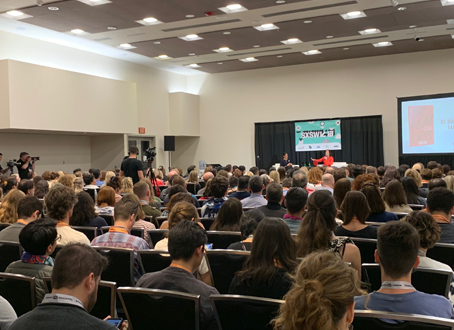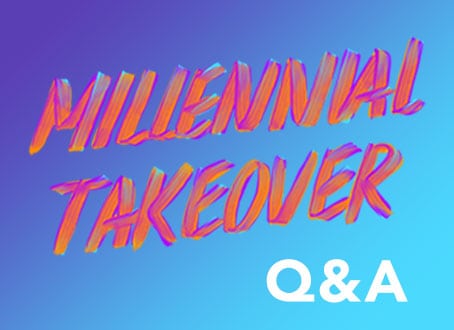This post was written by Ross Baird on behalf of the Case Foundation:
This past Monday, I participated in the “Impact Investing Rumble” at SXSW, a, lively debate hosted by Jean Case and the Case Foundation. At the heart of the Rumble was the question: “Does ‘impact investing’ necessarily mean concessionary returns?” To some, it seems completely logical that there is a class of investors that would be willing to sacrifice a little bit of profit if it meant more impact in businesses.
But I think that argument is wrong. I believe strongly that people who invest in businesses that positively impact society will make outsized returns in the next decade. Why? On Saturday (also at SXSW), Steve Case provided an excellent framing for the panel proposing the concept of the “Third Wave” of the Internet. The “First Wave”—from 1985-2000—got people online, and Steve and Jean Case had a lot to do with that. The “Second Wave”—from 2000-2015—used the infrastructure of the Internet to connect people. Mark Zuckerberg, Google, and Twitter have evaporated the distance between us and anyone else in the world in a constant conversation. Steve proposed a “Third Wave”—sharing his predictions on how the Internet, over the next 15 years, will pervade the rest of our lives, from our health, to education, to how we power and feed ourselves as a society.
The billion-dollar companies of the next fifteen years will be found in the areas that have the highest impact on people’s lives.
As Steve outlined at SXSW, the Internet has poised to transform sectors from health to education to food/agriculture to energy to financial services. At the organization I run, Village Capital, we are seeing this every day. We have an investment in Salt Lake City called TruClinic that is powering telemedicine across the world. Another investment, Spensa, in West Lafayette Indiana, is dramatically reducing the cost of pesticide application through smart insect monitoring. eMoneyPool in Phoenix, Arizona, is targeting the billion Americans who use informal savings groups as their primary bank account worldwide to credit. And PearDeck, an Iowa City company in our current education program, is transforming how teachers interact with their classroom through real-time interaction. We’re seeing these businesses get significant traction in mainstream markets—most recently at SXSW, PearDeck won the “Rise of the Rest” pitch competition as the best startup from Steve Case and Revolution’s 2014 “Rise of the Rest” tour.
Businesses in these sectors have the ability to transform things that everybody does every day—not just build apps that make the lives of the best-off in society more convenient through live social media streaming or on-demand valet parking. And the single thing they all have in common is they are under-valued by the market. At SXSW, I met a venture capitalist from a well-known Silicon Valley venture firm and we were discussing our investments in common. When I mentioned the industries we work in—health, food/agriculture, energy, education, financial services, he said “oh, we don’t touch those—they’re regulated industries.” And when I mentioned the cities we work in, he said, “oh, we only invest close to home.”
While Silicon Valley is the most amazing entrepreneurial ecosystem on the planet, current Silicon Valley investment attitudes are undervaluing 98% of entrepreneurs worldwide. This isn’t the first time I’ve heard this argument. The sectors that have the potential for the most impact on our lives, positive or negative, are usually regulated (and probably should be). And the entrepreneurs who have the most potential to transform core industries such as energy or agriculture are typically placed closest to energy and food production—and sometimes far from the most active entrepreneurial hotbeds.
The bottom line: the investors in the market who do not incorporate impact into how they invest, and look for the companies that are solving the problems faced by the most people, are missing the billion-person and billion-dollar opportunities of the “Third Wave” of the Internet. And investors who overlook entrepreneurs in industries that have the highest-impact, and in locations outside of the most developed entrepreneurial ecosystems, are ignoring 98% of businesses worldwide—and missing out on transformational opportunities.
In the Rumble, Sonal Shah, executive director of the Beeck Center for Entrepreneurship, said that regularly, entrepreneurs seeking an impact automatically relegate themselves to the “kid’s table”—looking for just philanthropy and concessionary capital. Jigar Shah, founder of SunEdison, pointed out the problem with this: real transformation (wireless power, thermal storage) requires in the hundreds of millions of capital—which only the mainstream markets can bring.
Yet the way the world is going, tremendous opportunities will only explode in the areas with the highest impact. To get there, though, impact investors—and entrepreneurs seeking an impact—have to identify, explore, and invest in the markets with the highest potential for impact—though they may be harder initially to develop. Entrepreneurs and investors will have to work at least twice as hard in more difficult to navigate sectors and ecosystems. The “train is leaving the station,” though, as Jean Case said at the end of the panel—and the payoff will be well worth the effort.
Ross Baird is the Executive Director of Village Capital.





